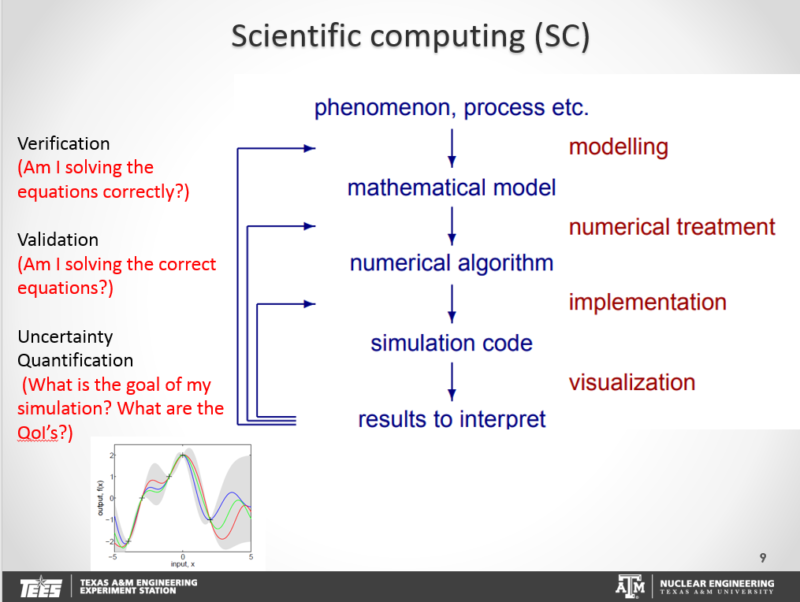My courses:
At TAMU, I have taught:
- Introduction to Nuclear Engineering, Part II (NUEN 302)
- Introduction to Reactor Physics, Part I (NUEN 301)
- Fuel Assembly and Core Design (NUEN 418)**
- Numerical Methods for Nuclear Engineers (NUEN 329)*
- Multiphysics Computations in Nuclear Science and Engineering (NUEN 618)**
- Uncertainty Quantification in Nuclear Science and Engineering (NUEN 647)*
- Numerical Methods in Reactor Analysis (NUEN 629)*
* = courses in which I introduced new material.
** = courses I created.
Scientific Computation Curriculum:
Our undergraduate curriculum in scientific computation is much richer than that of any other nuclear engineering program.
Texas A&M undergraduates take: Calc-I, Calc-II, Calc-III (MATH 151, 152, 252), ODE (MATH 309), linear algebra (MATH 417 or NUEN 329), and can take, as a tech elective, Numerical Methods in Nuclear Engineering (NUEN 430, where they are introduced to the beauty of the transport equation). No other school goes that far, some do not even require linear algebra (in a day and age where the ability to code -an exercise in logic and rigor in many aspects- can determine future career path …).
At the graduate level, students interested in scientific computation should take:
- NUEN 618 (multiphysics, you get to play with MOOSE)
- NUEN 625 (neutron transport, you get to write your own Sn code)
- NUEN 627 (radiation-hydrodynamics; we are likely the only school offering this)
- NUEN 629 (numerical methods in reactor physics)
- NUEN 647 (uncertainty quantification)
- MATH 609 (advanced linear algebra)
- MATH 610 (finite elements)
- MATH 676 (scientific computing with finite elements, a great course based on deal.ii)
- plus some great graduate-level courses in parallel programming from the Computer Science department) and in statistics (from the Statistics department).
Finally, note that you can obtain a Certificate in Computational Sciences with little extra effort !!!

